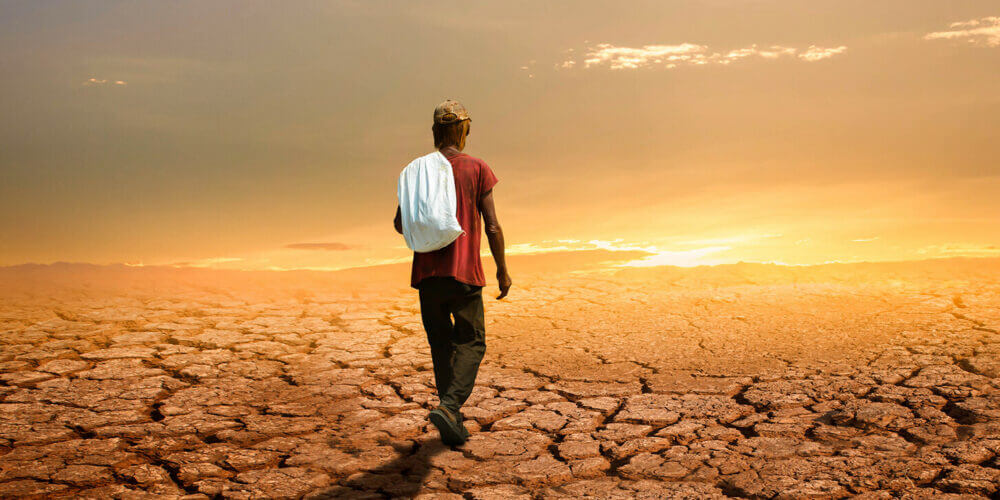Pakistan’s floods have taken a truly devastating toll – around 1,700 people have lost their lives, more than 33 million have been displaced and economic damage is estimated at $40 billion. Record breaking rain and melting glaciers left more than one third of the country under water.
For those in the financial capital of a wealthy nation, the events in Pakistan perhaps encapsulate climate change – a problem for more distant parts of the world, far away from their concerns. The most vulnerable countries are on the frontline of climate change, with weak existing infrastructure and poverty compounding the impacts of extreme weather.
But there are more hard-headed reasons why supporting poorer nations to adapt to climate change is in the self-interest of those with more financial might. Western economies depend on a highly connected system of global supply chains. If one link in the chain is disrupted, a whole global industry can be paralysed overnight.
“We saw through Covid what happens when supply chains are impacted – and that’s exactly what we see in the climate crisis… but on steroids,” says Patrick Verkooijen CEO of the Global Center on Adaptation.
“If you look at the S&P 500, 40% of them have already experienced some form of supply chain disruption – so this is not theoretical, it’s occurring” says Abyd Karmali, Managing Director, ESG & Sustainable Finance at Bank of America.
This has already been witnessed, for example, during the Covid-19 pandemic, and Russia’s invasion of Ukraine, or when a container ship blocked the Suez Canal, bringing nearly $60 billion trade to a standstill.
But extreme weather is also disrupting global trade. Earlier this year, the port of Durban was ravaged by flooding. The trading gateway is South Africa’s largest, and is a key export route for cobalt, an essential element in electronics such as batteries for electric cars. Supplies were cut off globally due to the floods.
“Climate change is affecting that all over the world – no country is immune to that,” says Marisa Drew, head of sustainability at Standard Chartered.
The damage climate change could do to global supply chains could be far worse than what we have already seen, forcing costs of commodities and components ever upwards. Again, this has already been seen, after flooding hit Bangkok in 2011 caused the prices of cars, cameras and phones to shoot up, and when Russia invaded Ukraine and forced costs of key food staples such as oil and grain to spike.
Resilience boost
So what can the finance community and politicians in the developed world do? Developing countries need infrastructure to help them adapt to rising sea levels. London’s Thames Barrier is one example – operational since 1984, it is now being used far more than expected.
Sea level rise caused by climate change means that every major port and city around the world will need far better protection. But the money needed to achieve that is nowhere near what’s needed.
The flow of international finance to pay for adaptation in developing countries reached US$29 billion in 2020 – an increase of 4% from 2019 and a 34% share of overall climate finance, according to an assessment by the UN Environment Programme (UNEP) launched just ahead of the COP27 climate talks in Sharm El-Sheikh.
Yet it is still five to ten times below the estimated need $160-340 billion annually by 2030 and $315-565 billion by 2050, and the gap continues to widen, UNEP warns. Last year at the COP26 talks, governments committed to double the amount of finance they provide for adaptation, but this has not been delivered.
African angle
In Ethiopia and Kenya, millions are suffering from droughts every year. Millions of South Africans are struggling with water shortages.
While most of the South Sudanese territory could dry out by the end of the century, the highly-populated coastal zones in Liberia are drowning.
Countries are responding by increasing their spending on adaptation. And as this report from Power Shift Africa underlines, on average, they are looking to make investments of 4.04% of their current GDPs every year. Some are spending as much as 10% on adaptation.
An ounce of prevention
This does not make financial sense. It is far cheaper to invest in more resilient infrastructure now, than wait till floods and storms cause financial losses far greater than prevention. The $29 billion spent on adaptation projects in 2020 is less than the $40 billion estimated hit on Pakistan’s economy.
Climate scientists have warned us of what is to come. As temperatures rise, changes in the climate system such as high temperatures, heavy precipitation and tropical storms will become more extreme as impacts compound.
The world has a great range of potential solutions in its adaptation toolbox. Early warning systems, nature-based solutions and future-proofed infrastructure can be combined to create a more resilient world. The missing element is the political will to raise the sums needed to help developing countries tackle this.
Scientists have also stressed that options for adaptation will narrow – and could become impossible – as the world warms. Huge challenges lie ahead – the earlier solutions are planned, the more effective they will be in protecting human lives and economies.
The time to start is now.





